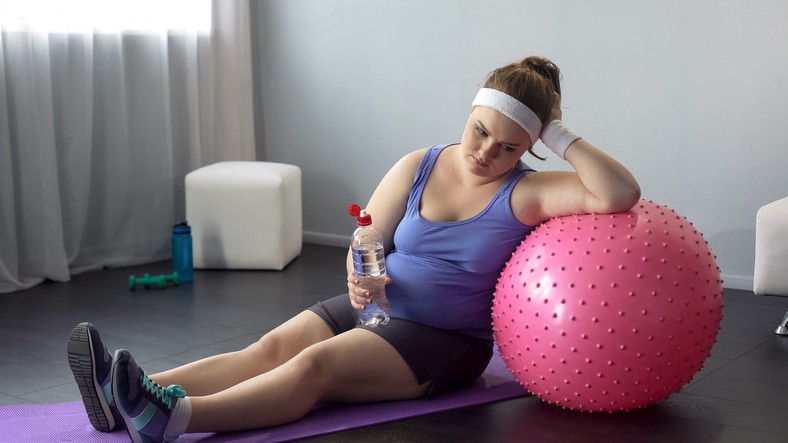
Everyone has been subjected to stressful situations in their lives. Stress can adversely affect your health, productivity, and quality of life. By reducing stress levels, exercise can help to reduce stress. Low-impact workouts can be a great choice for this purpose, since they reduce the chance of injury and don't leave you feeling exhausted. Here are some benefits to low-impact exercise.
Swimming is a great low-impact option for a workout.
The benefits of swimming are extensive. Swimming is good for your body. It strengthens you and tones many muscle groups. Swimming is a great cardio exercise. It can increase heart rate, and even spike it during sprints. It will not only improve your cardiovascular health but also reduce the stress on your joints. Swimming is an excellent way to increase your energy.

Pilates is an excellent low-impact workout.
Pilates is an exercise that's low-impact and can be beneficial for people of all fitness levels. Its slow, steady movements can stretch the muscles, improve posture and relieve lower back tension. Pilates is safe for anyone with mobility limitations or who has suffered from injuries. Pilates exercises require good form and breathing. Mind-body activities can also help to reduce stress. For beginners, it is recommended to take a Pilates class taught by a certified instructor.
Rowing is an excellent low-impact exercise.
Rowing is a great choice for those looking for low-impact exercises. Rowing is a low impact workout because of the repetitive motions and smooth movements. Injuries can result from poor form and posture. Low back pain is common in rowers. Neglecting to engage abdominal muscles is one reason for low back pain. Therefore, the weak abdominal muscles can be compensated by the lower spine. These problems can easily be avoided using rowing machines.
Riding a bike is a great low-impact workout
You can get a great workout on your lower and upper body by riding a bicycle. Cycling is an all-over body workout that strengthens your core and tones your arms, legs, buttocks, and back. You can ride outside or indoors with a stationary bicycle. Bicycling offers a fun, low-impact workout that is easy on the joints. Riding a bike is also great for beginners and experienced riders alike.
Walking
Walking is the most adaptable and easily accessible form of low-impact training. Walking is a great way to keep your heart healthy and improve cardiovascular health. It doesn't take much equipment or shoes to begin a walking program. Most people can walk short distances. It can be daunting to learn yoga or tai chi. But walking is safe, manageable, and you can increase your intensity as you get better.

An elliptical machine can be a low-impact exercise that is great for cardiovascular health.
An elliptical exercise is much more gentle than other forms of exercise. You simply pedal your feet in reverse while moving your torso back and forth. It's a low-impact exercise that can help you improve your cardiovascular and strength. The elliptical machines can be adjusted to adapt to your level of fitness as well as your comfort.
FAQ
What foods will help me lose weight more quickly?
Eating fewer calories can help you lose weight faster. This can be done in two ways:
-
Reduce the calories you eat each day.
-
Get more exercise to increase your metabolism.
It is easy to reduce calories. We are constantly being bombarded by calorie-dense fast food options every where we go. Here are some foods that can help you lose those extra pounds.
-
Beans are high in fiber and protein. They are low in calories, so they're a good choice for people who want to lower their caloric intake.
-
Oatmeal is low on calories but high in nutrients, such as magnesium or potassium. Plus, it contains less sugar than other cereals.
-
Eggs are high in cholesterol and protein. Eaten eggs one or two times a week can help boost metabolism and allow you to burn more calories.
-
Whole grain bread can reduce hunger pangs, so you might feel fuller for longer.
-
Dark chocolate is high in antioxidants, flavonoids and other substances that have been linked with lower blood pressure and better heart health.
-
Cottage cheese is high-in calcium, which can help build strong bones. Cottage cheese also contains vitamin D, which can boost immunity.
-
Omega-3 fatty acids are abundant in salmon, which can promote brain development and improve cardiovascular function.
-
Green tea is rich in catechins, compounds which fight cancer and increase metabolism.
-
Broccoli is a great source of folic acid, which reduces homocysteine levels in the blood. A higher risk of developing heart disease and stroke is associated with high homocysteine levels.
-
Yogurt is a wonderful way to get probiotics into your diet, without having to consume a lot of added sugars. Probiotics can help improve digestive health.
-
Berries make a great snack and are very nutritious. All fruits, including blackberries, blueberries, raspberries, raspberries, cranberries and strawberries, are rich in vitamins and minerals.
-
Avocados are rich in healthy fats. A half avocado provides 80 calories with plenty of fiber, potassium, and filling fiber.
-
Nuts are a delicious snack option and a great source protein. Nuts include cashews (almonds), hazelnuts (pecans), walnuts, walnuts, and pistachios.
-
Sweet potatoes are another starchy crop that is rich in beta carotene. This makes your skin glow. Because they have higher levels of beta carotene, the orange sweet potatoes are more beneficial than regular sweet potatoes.
Why Exercise is Important for Weight Loss
The human body, an amazing machine, is incredible. It was created to move. Our bodies are designed to move, whether we're running, swimming or biking, lifting weights, doing sports, jumping rope, walking or standing still.
Exercise is good for your health and helps you tone your muscles. This makes you feel better physically and mentally. It is common to hear people say that exercise is essential for weight loss. But what exactly is it?
-
The exercise increases metabolism. When you exercise, your body uses energy. When you move, your heart beats quicker, blood flows to your muscles, oxygen is absorbed by your lungs, and blood flows faster to your muscles. All these activities use energy. Exercise can help you burn more calories and increase your metabolism rate. The amount of energy that your body burns during exercise is called the "burning calories".
-
Exercise reduces appetite. You will eat less when you exercise, and you will eat fewer calories during the day.
-
Strengthening your muscles through exercise is key. Muscle tissue is more energetic than fat tissue. If you build muscle mass, you will require less food to maintain your weight.
-
Exercise releases endorphins. Endorphins make you smile. They are released into the bloodstream during exercise. Studies have shown that endorphins can block pain signals reaching your brain. This gives you a feeling of well-being.
-
Exercise can boost self-esteem. Regular exercise leads to higher self-esteem. It also leads to a healthier lifestyle.
Small changes are the best way to lose weight. Consider adding these tips to your daily routine.
How Much Weight Can You Lose in a Week?
Your current body fat percentage will determine how much weight you can lose. To begin, you need to determine how much weight that you would like to lose. Next, find your BMI (Body Mass Index). Your BMI is a measure of how much weight you need to lose. If your BMI is 25 or greater, you're overweight. If your BMI exceeds 30, you may be obese.
If you are 200 lbs, your BMI will be 28.7. To reach a healthy weight, you would need to lose 70 pounds. To see if you're overweight, visit www.healthyminds.com/bmi/.
Once you know your BMI, you can use this formula to figure out how many pounds you'll lose per week:
(Your Goal Weight - Current Weight)/BMI * 7 Number Of Pounds Lost Per Week
To lose 50 pounds in a month, you would need to exercise for 2 weeks. That's 56 days divided by 7 pounds per day. This equates to an average of 8.3lbs per week.
You could also try this calculator from www.weightlosscalculator.net. It will give you an approximate estimate of the calories you need to lose 1 pound each week.
What should you eat while intermittent fasting?
Cut out carbs to lose weight. That means cutting out bread, pasta, rice, potatoes, and other carbohydrate-based food.
It is important to eat less protein, as it will keep you fuller longer. So you won't feel hungry as often.
Focus instead on foods high in healthy fats such olive oil and avocado, as well as nuts and seeds. These foods will keep you full for hours after you eat them.
You should ensure you drink plenty of water. Water is important for your body's ability to stay hydrated and helps you burn more fat.
This could be because you find you really crave these foods when fasting. This doesn't mean that you must give in to your cravings. You might gain more weight if you do.
Keep an eye on the amount of food you eat throughout the day to avoid overeating. Drink a glass water whenever you feel hungry.
It might sound counterintuitive at first, but it has been shown that this can help you slim down. According to a study published in Obesity, participants consumed fewer calories if they drank plain water rather than sugary beverages.
Consuming water plainly also helped to decrease hunger. Don't drink sweetened beverages if your goal is to lose weight. Stick to water.
To lose weight, you don’t have to count calories or restrict certain foods. Focus instead on small changes in your lifestyle.
For example, you can start by swapping your usual breakfast sandwich for a bowl of oatmeal. Try swapping your afternoon cookie to a piece or fruit.
These simple swaps can add up over time to help you shed excess weight without spending hours in your kitchen.
How often are people quick?
People who are on a ketogenic diet only fast once a week. Others fast twice per semaine. Others fast three times a week.
There are many lengths to fasting. Some people fast for 24 hours, whereas others fast for 48 hours.
Some people even go longer than 72 hours. However, these extreme cases are rare.
Can I eat fruit while on intermittent fasting
Fruits are great for your health. They are full of vitamins, minerals as well as fiber, antioxidants and other nutrients. However, they contain sugar, which can cause blood glucose to rise. This can cause insulin resistance and weight gain. If you're looking to lose weight with an IF diet then you should choose fruits that are low in glycemic.
Statistics
- Among women, the increase in metabolic rate was nearly 4%, or 50 more calories per day (14Trusted Source (healthline.com)
- Another study found that 24 weeks of weight training led to a 9% increase in metabolic rate among men, which equated to burning approximately 140 more calories per day. (healthline.com)
- One 6-month study showed that simply doing 11 minutes of strength-based exercises 3 times per week resulted in a 7.4% increase in metabolic rate, on average. (healthline.com)
- One study in 9 active men found that HIIT burned 25–30% more calories per minute than other types of exercises, including weight training, cycling, and running on a treadmill (18Trusted Source (healthline.com)
External Links
How To
How to Intermittent Fasting
Intermittent Fasting is a method of dieting where you only eat one meal per week, typically Monday through Friday. The goal is to decrease your overall calories and still get adequate nutrition. It's believed that this helps burn fat faster than if you were eating normal meals throughout the entire week.
The most common form IF is to reduce calories on specific days. This means that you might skip breakfast every day and then indulge in whatever food you desire throughout the day. You could also choose to eat three small meals daily rather than two large ones.
There are many types of intermittent fasting. Each type of intermittent fasting has its pros and cons. Alternate-day fasting is the easiest method to get started because it doesn't require any significant lifestyle changes. However, for some people it can be difficult to follow a strict diet, so they may prefer to explore other options.
If you want to try intermittent fasting, I suggest starting with alternate-day fasting. This will allow you to gradually transition into more extreme fasting routines without completely changing your lifestyle.